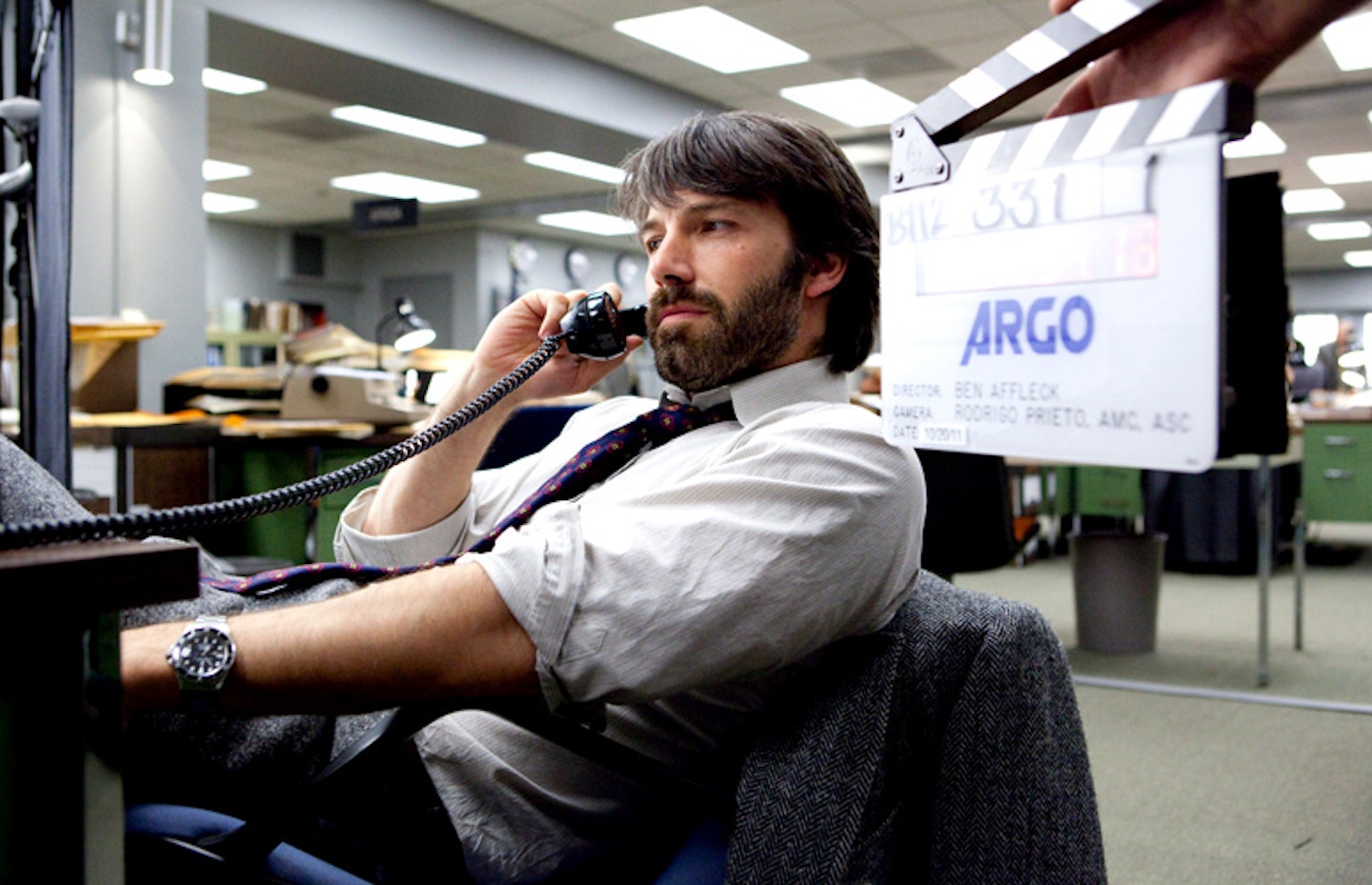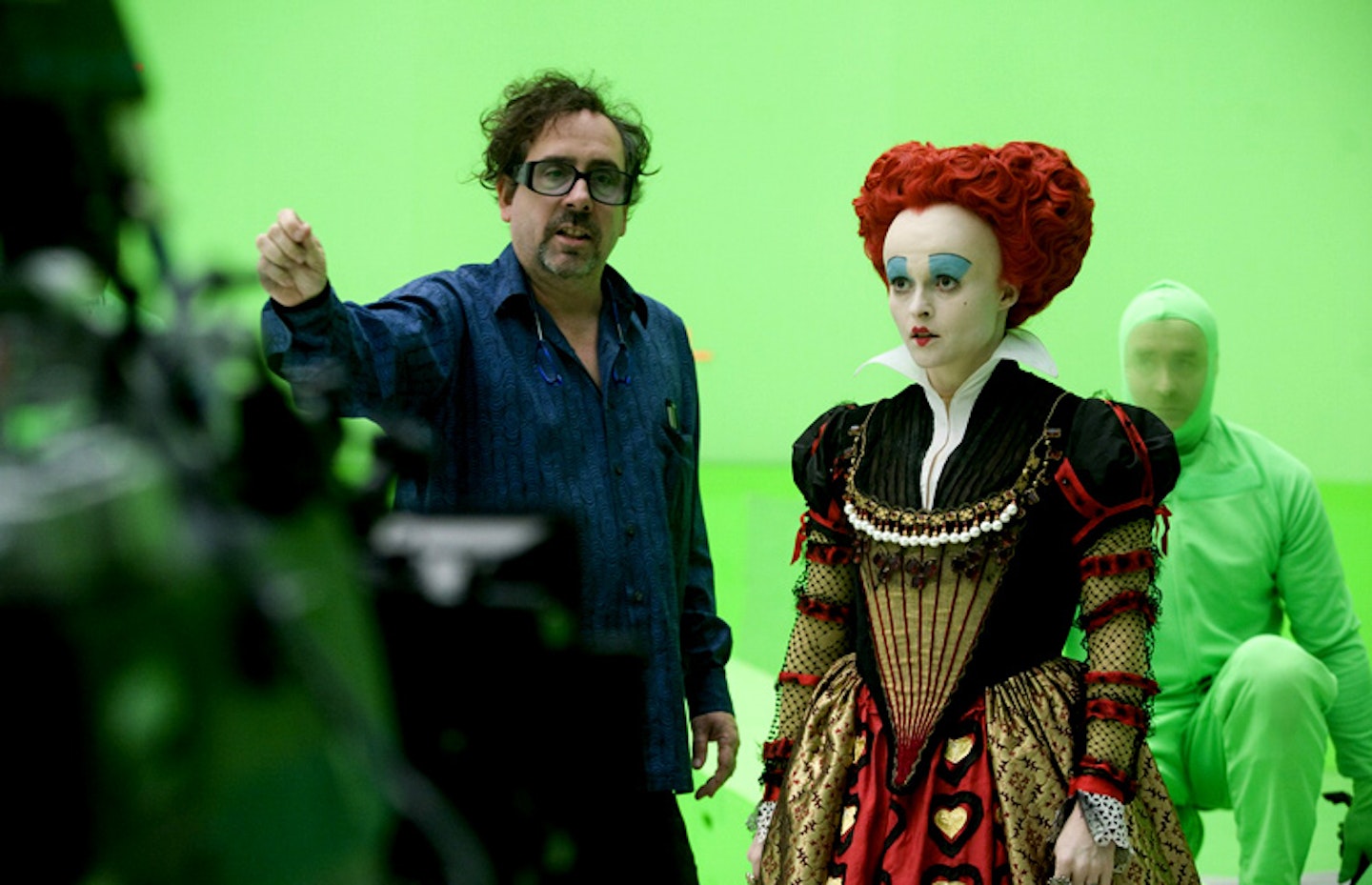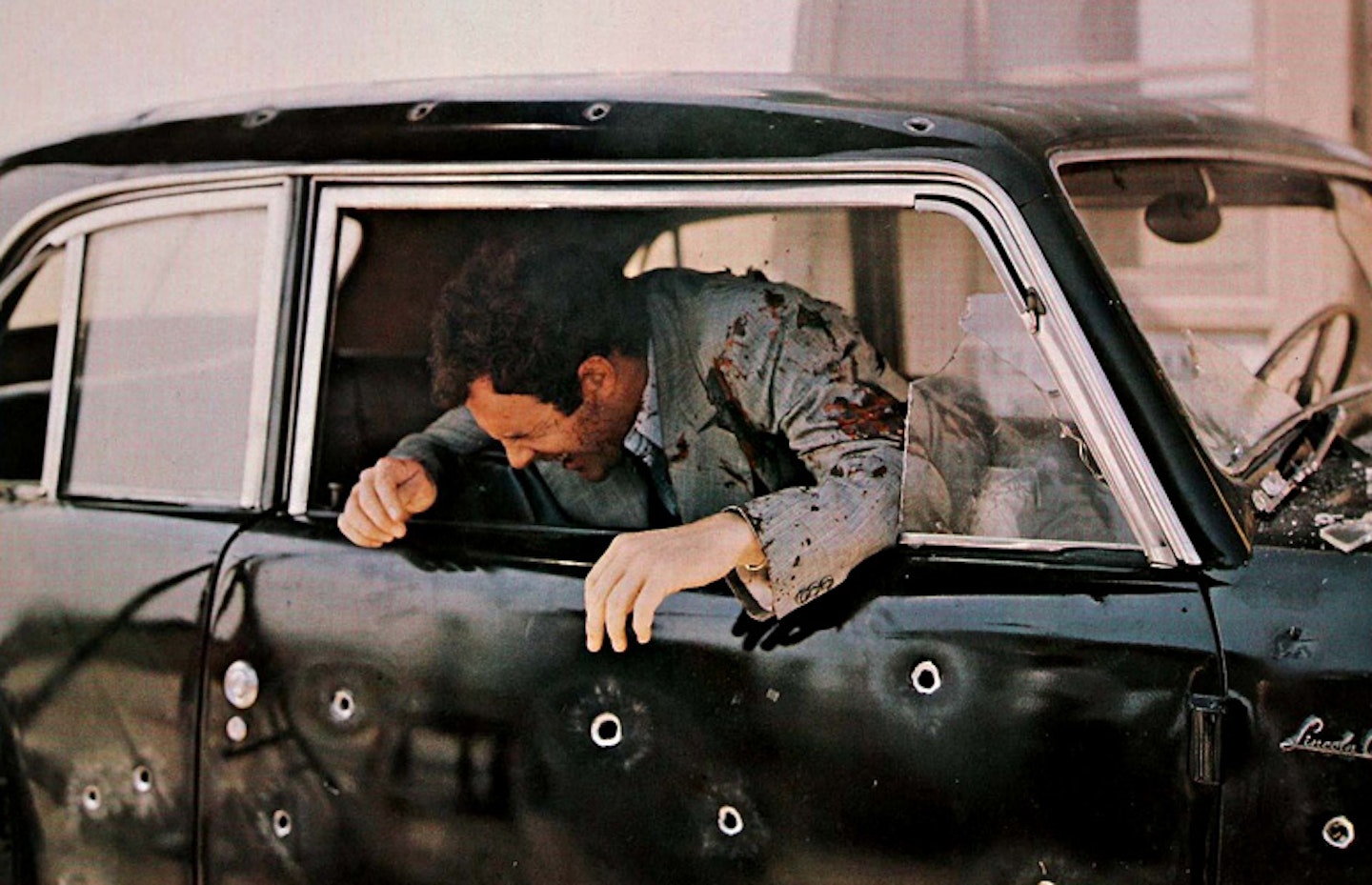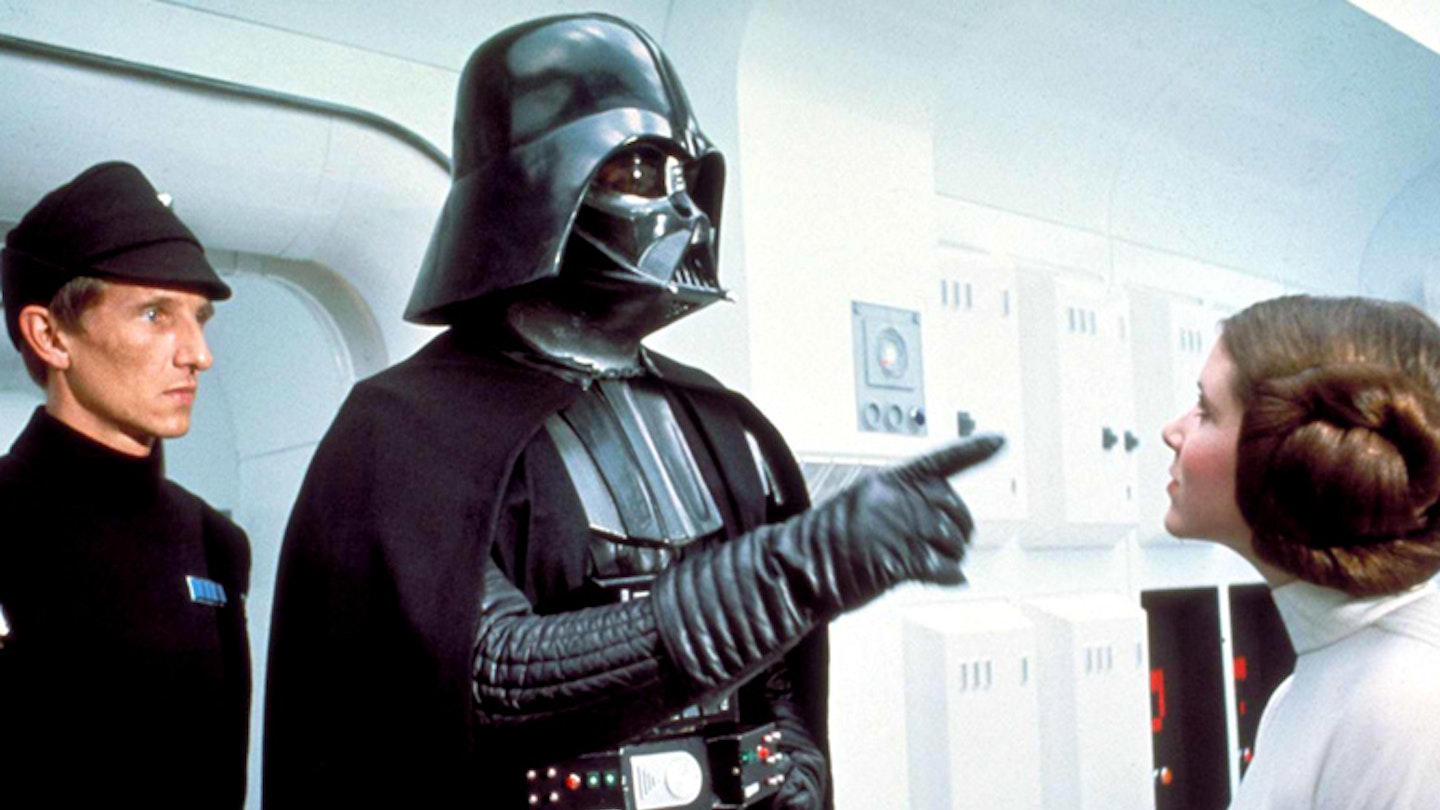A film set can be a confusing place for an outsider, replete as it is with insider acronyms and strange vocabulary. Should you find yourself suddenly thrust on set and expected to know your way around, you might find this handy primer to common terms useful…
ADR: (Additional Dialogue Recording): The process of re-recording lines after shooting to replace poor-quality sound or slightly alter line delivery. Often used to eliminate naughty swear words to gain that audience-friendly PG-13. Occasionally used to re-dub one actor’s voice with another: see, for example, Darth Vader, where James Earl Jones replaced David Prowse. Otherwise known as “looping”.
Alan Smithee: A notorious pseudonym used by directors unwilling to have their own name slapped on a film when they weren’t happy with the final cut. After the ironic calamity that was Burn Hollywood Burn, a film about the practice that was itself eventually credited to one Alan Smithee, it’s been retired.
Back projection: An age-old technique where pre-recorded footage appears behind the actors being filmed, often used for driving scenes (think Airplane! or any classic 1950s movie). Nowadays, it’s largely been replaced with greenscreen, but is occasionally used for nostalgia’s sake in films like Kill Bill.
Blacklist: Once a source of shame for the movie industry, this originally referred to actors and directors shunned by Hollywood during the heights of McCarthyism in the 1950s for alleged ties to Communism. Now, however, it refers to the annual “blacklist”, an insider survey that compiles the year’s (allegedly) best unproduced screenplays. It’s resulted in The King’s Speech, Argo, and… Cop Out.
Blocking: The process of running through a scene prior to filming to decide where the actors will move and where lighting and cameras should be placed.
Boom: The large fuzzy microphone on the end of a pole that looks a bit like an old dog. It floats above the actors, close enough to pick up dialogue but, ideally, far enough up or down that it doesn’t appear in the shot.
Call sheet: A list, usually created by the first assistant director, of actors who will be required on set for each day’s shooting, what scenes are scheduled and which locations will be used.
Champagne Roll: Usually at 100 film rolls, or sometimes 100 hard-drive downloads on a digital shoot, into a shoot, the cast and crew get a celebratory glass of champagne. Hooray!
Change pages: If a script is altered while filming is underway, any changes are handed out onset in the form of “change pages”. These are normally a different colour to the original script. A script with a lot of changes during filming can look like a beautiful rainbow.

Clapper: A board displaying key information about the scene being filmed (scene number, take number, film name), filmed by the camera before each take. On top (or bottom) is a piece of wood on a hinge (traditionally painted in black and white stripes), which claps down to the board, allowing for audio-visual synchronisation. Also known as “clapboard”.
Clean speech: A take in which there were no errors with dialogue recording.
Continuity report: A list specifying everything that happened when a scene was filmed, including weather conditions and camera settings. This is meant to prevent continuity errors creeping in between takes or during reshoots. Also known as the “continuity script”.
Craft service: The catering unit. Typically serves apple crumble and chips with everything. A film with “clean” catering, like many Zack Snyder efforts, generally ditches the chocolate bars and has lots of dried fruit and nuts on offer instead.
Dailies: The prints of footage shot the previous day, often viewed by the director and producers at the end of each day to monitor progress. Also known as “rushes”. Can cause side-effects ranging from nervous breakdowns to over-confidence back at the studio.
Dolly: A small platform for the camera, designed to roll along special tracks. Although Steadicams have reduced their use, dollies have certain unique strengths. In particular, they’re still used for the so-called Vertigo shot, where the camera zooms in while the dolly moves backwards, severely altering the perspective.
Dope sheet: A list of scenes that have already been filmed, usually compiled by the assistant cameraman.
Foley: Named after Jack Foley){href='http://en.wikipedia.org/wiki/Jack_Foley_(sound_effects)' target='_blank' rel='noopener noreferrer'}, this is the art of simulating certain noises in post-production to enhance particular moments. Foley artists might smack a piece of leather to get a good punching sound, or snap a carrot when a bone is broken. For scenes of disembowelment, the squelching of pasta is a favourite.
Gate: When shooting on film, you’ll often hear the assistant director shout, “Cut! Check the gate!” This is to ensure that the camera and film is free of any impurities or blockages (a hair in the way, for instance) that would render what’s been filmed unusable or call for another take. The phrase is sometimes still heard on a digital set, but only for auld lang syne since there’s no film gate.

Greenscreen: A technique where actors perform in front of a stark, monochromatic background, usually bright green or blue. This is then replaced with a background image, often with CGI. Also known as “bluescreen” or “chromakeying”.
Honeywagons: Portaloos to you and me.
Insert: A close-up, often filmed by the second unit, usually of an object.
Magic hour: The short time just before sunset when light levels change dramatically and very quickly, enabling golden shots that will look “very Terrence Malick”. See the opening shot of Hot Fuzz or virtually any Michael Bay movie.
Matte shot: A shooting technique where painted artwork (ordinarily on glass) is combined in-shot with live action, to create the illusion of a grand backdrop. It’s old-fashioned, but still used by Peter Jackson and others for those invaluable epic visuals.
Overcranking: The act of speeding up the frame rate on a film camera, so that more frames are captured. Enables the footage to be played in slow motion. Undercranking has the opposite effect. Dates back to when cameras were hand-cranked.
Pick-ups: Footage filmed after shooting wraps, usually of minor shots. In the case of something like The Lord Of The Rings, however, pick-ups were major and essential. Jackson even went so far as to film a few pick-ups for the extended edition of Return Of The King, after the film won eleven Oscars.
Print: Along with “Check the gate!”; “Print it!” is a fun but antiquated catchphrase on film sets. It means that the latest take of a scene was good, that everyone’s happy they have the shot needed and that it should be developed.
Re-shoots: Footage filmed after shooting wraps, re-doing scenes from the film rather than adding additional scenes or minor reaction shots etc. The existence of re-shoots is often seen as evidence that a film is in trouble, so filmmakers will go out of their way to describe re-shoots as pick-ups.
Shot list: A planned list of the scenes and angles to be shot that day, including details such as location, and which actors and departments are involved.
Shutter speed: The length of time a frame of film is left exposed in the camera, or that the shutter is open on a digital camera. Varying this means that you vary the amount of light that enters the camera. If the speed is slower, this allows more light but also more motion blur.

Squib: A small explosive device that simulates a bullet hit or very small explosion. Used to memorably excessive effect to kill Sonny Corleone in The Godfather (above).
Steadicam: A specially designed harness attached to the camera operator, which stabilises the camera as they move it. Invented by Garrett Brown, the Steadicam eliminates the need for dolly tracks, and was used most famously to film The Shining.
Stills photographer: An official photographer who will snap on-set pics while scenes are being rehearsed or shot, for use in promoting the film.
Rhubarb: Background conversation by extras. So-called because extras were often asked to mutter the word “rhubarb” to produce the effect of genuine conversation, with their mouths moving convincingly. Also known as “walla”.
Rotoscoping: Little used nowadays, this was once an invaluable technique for producing high quality animation and was a favourite method in Soviet cartoons. It refers to the time-consuming process of shooting scenes with actors in live-action, and then tracing over those images to produce an animation. Used in a wide range of films, from Ralph Bakshi’s Lord Of The Rings to Richard Linklater’s A Scanner Darkly.
Unit publicist: The poor soul who sets up press visits to a film set and handles all press matters relating to the film during shooting. It will be their job to, say, squelch reports of a developing affair between Richard Burton and Elizabeth Taylor on Cleopatra, and hide it from the press, as well as getting out positive buzz about the film.
Whip-pan: When the camera pans particularly quickly, resulting in motion blur. This is often used to sneak in a hidden cut, as in the lengthy opening shot of Serenity. See: The 30 Camera Shots Every Film Fan Needs To Know.
Winnebago: The giant trailers that stars occupy when not required on set.
Wrap: End of shooting. As in, “That’s a…”
